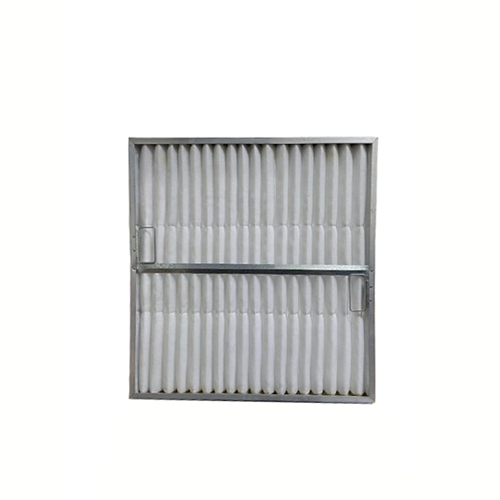Carbon Filter
Carbon Filter Specification
- Resistance
- Yes
- Usage
- Industrial
- Size
- 4-10 inch
- Material
- Metal
- Product Type
- Carbon Filter
Carbon Filter Trade Information
- Minimum Order Quantity
- 1 Piece
- Supply Ability
- 500 Pieces Per Month
- Delivery Time
- 5 Days
About Carbon Filter
Carbon Filters, also known as activated carbon filters, are air filtration units designed to remove gaseous contaminants, volatile organic compounds (VOCs), odors, and chemical fumes from the air. These filters use activated carbon granules or impregnated carbon media, which adsorb molecules from gases via a process called adsorption, making them ideal for applications requiring odor control and chemical filtration.
Carbon filters can be used as stand-alone units or in combination with particulate filters (like mini pleat or HEPA filters) for comprehensive air purification. Common formats include panel filters, cylindrical cartridges, and V-bank cassettes, each designed for specific airflow and application needs.
Key Features
-
Media Type: Activated carbon granules, impregnated carbon media, or carbon-impregnated synthetic fibers
-
Construction: Plastic, galvanized steel, aluminum, or cardboard frame
-
Formats Available: Panel, pleated, cartridge, V-bank, or honeycomb structure
-
Primary Function: Adsorption of VOCs, gases (like ozone, NOx, SO2), and odors
-
Typical Applications:
-
Commercial and industrial HVAC systems
-
Cleanrooms and laboratories
-
Food processing and kitchens
-
Data centers and server rooms
-
Gas turbine inlet systems (as a chemical pre-filter)
-
-
Service Life: Varies widelytypically 3 to 6 months depending on gas concentration and environmental factors
FAQs Mini Pleat Filters (in context with Carbon Filters)
1. Can mini pleat filters be used with carbon filters?
Yes. In many systems, mini pleat filters are used upstream to remove particulates, while carbon filters handle gases and odors. This combination provides comprehensive air purification.
2. Do mini pleat filters remove odors or VOCs?
No. Mini pleat filters are designed for particulate filtration, not gas phase filtration. To remove odors, VOCs, or chemical fumes, a carbon filter or gas-phase filter is required.
3. Why combine mini pleat and carbon filters in HVAC or cleanroom systems?
-
Mini pleat filters protect downstream equipment and reduce dust load
-
Carbon filters improve indoor air quality by removing gases
Together, they provide clean, breathable air free of both particles and harmful gases.
4. Which should be installed first: carbon or mini pleat filter?
In most systems, mini pleat (particulate) filters are installed first to protect the carbon media from clogging with dust, thereby extending the carbon filter's life.
5. Are there mini pleat-style carbon filters?
Yes. Some manufacturers offer carbon-impregnated mini pleat filters, combining particulate and gas adsorption capabilities in a single filter. However, they typically offer less adsorption capacity than deep bed carbon filters.
6. How often should I replace mini pleat filters vs. carbon filters?
-
Mini pleat filters: Every 612 months, based on pressure drop and dust load
-
Carbon filters: Every 36 months, or when odors return or gas breakthrough occurs
7. Do mini pleat filters protect against chemical corrosion?
Not directly. If corrosive gases are present (like SO or HS), carbon filters or chemical adsorbers are required to neutralize those gases before they damage sensitive equipment.


Price:
- 50
- 100
- 200
- 250
- 500
- 1000+
 |
M/S ADITYA FILTRATION SYSTEM P LTD
All Rights Reserved.(Terms of Use) Developed and Managed by Infocom Network Private Limited. |






